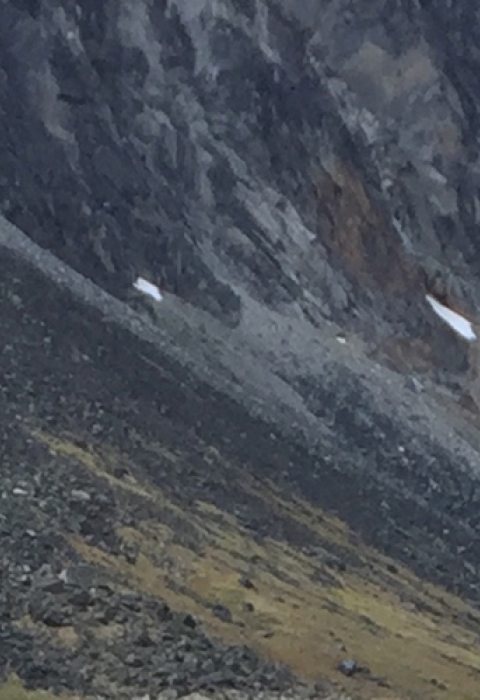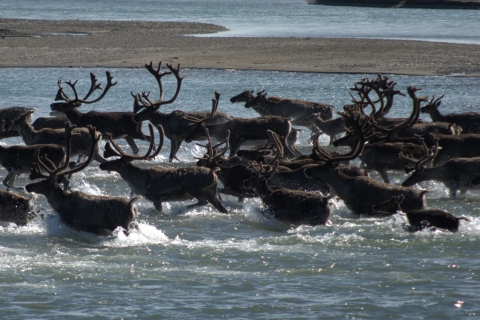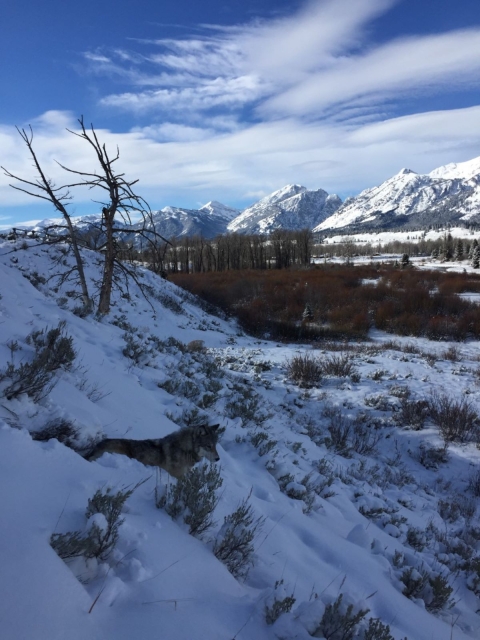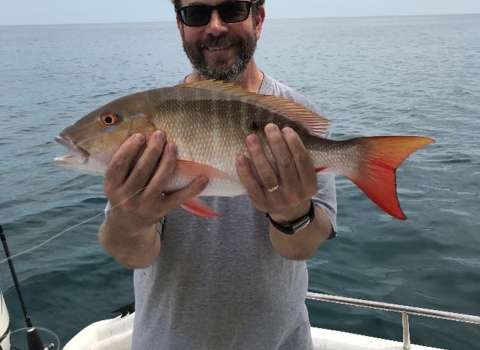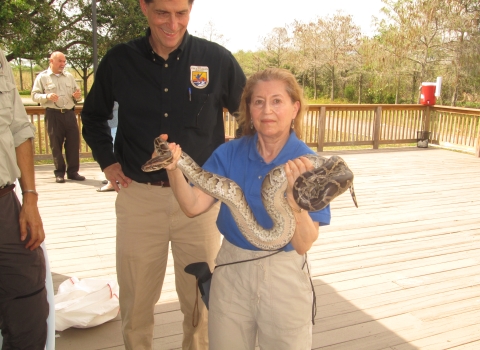Dave Gustine is a supervisory biologist, FWS Polar Bear Program lead, and the USFWS Library’s latest FWS Scholar who has published over 50 articles on the habitat and nutritional ecology of large mammals. He grew up in northeastern Oklahoma and has wanted to work with animals since he was a kid. He has a bachelor’s degree in political science from the University of Oklahoma and a bachelor’s in wildlife biology from Colorado State University. Dave has a master’s degree in biology from the University of Northern British Columbia where he examined factors that influenced reproduction and habitat selection of woodland caribou. He later received a Ph.D. in biological sciences from the University of Alaska Fairbanks, where he focused on studying nutritional ecology of caribou and muskoxen in winter, with an emphasis on protein dynamics and how that shapes reproduction.
His areas of expertise include managing human-wildlife conflicts and the habitat and nutritional ecology of large mammals. Dave’s work has included research on woodland and barren-ground caribou, muskoxen, brown bears, polar bears, black bears, Stone’s sheep, red foxes, elk, and wolves. He shares, “Working with all three North American bear species in Alaska and the Greater Yellowstone Ecosystem remains the highlight of my career, it’s hard to pin down one specific experience that has been my favorite.”
He has worked for the state of Colorado, the Bureau of Land Management in Idaho, and for the Province of British Columbia in both wildlife management and research. He also worked as a research biologist for the U.S. Geological Survey in Alaska, where his program focused on ascertaining the potential effects of climate change climate change
Climate change includes both global warming driven by human-induced emissions of greenhouse gases and the resulting large-scale shifts in weather patterns. Though there have been previous periods of climatic change, since the mid-20th century humans have had an unprecedented impact on Earth's climate system and caused change on a global scale.
Learn more about climate change and anthropogenic developments to caribou and brown bears. In 2015, Dave and his family moved from Alaska to the Jackson, Wyoming, area where he worked as Supervisory Wildlife Biologist for Grand Teton National Park.
Dave recently published an article titled, Correlating gut microbial membership to brown bear health metrics. Animal gut microbiome can be beneficial in many ways, including dietary supplementation, energy uptake, and host immune responses. This suggests that it plays a vital role in the conservation and management of species and their populations. “Gut microbiomes (GMBs) remain under-explored in wildlife. But as latitudinal and seasonal shifts in resource availability occur, there’s a multitude of micro-ecosystem services facilitated by the GMB that may be especially important to wildlife health and resilience.” Read more about GMB in Intrinsic and extrinsic factors influence on an omnivore’s gut microbiome.
In Dave’s article titled, Survival and reproduction in Arctic caribou are associated with summer forage and insect harassment, he describes the climate-driven “greening of the Arctic” and its effects on caribou populations. He studied the influence of summer habitat conditions on caribou demographics and how they may be impacted in the future. Spatiotemporal variation in forage is a primary driver of ungulate behavior. Summers in the Arctic are short; they provide important forage resources, but there’s also intense insect harassment, and both factors are being altered by longer, warmer growing seasons.. For more information on this topic, check out Dynamic selection for forage quality and quantity in response to phenology and insects in an Arctic ungulate, which shows how mosquitoes strongly affect caribou movement rates and forage selections and ultimately how caribou prioritize quality earlier in the summer and quantity later on.
In 2020, Dave and his family moved back to Anchorage, Alaska, where he currently serves as the Lead of the Polar Bear Program in Marine Mammals Management for the U.S. Fish and Wildlife Service. This team includes nine biologists responsible for developing, facilitating, and conducting all aspects of strategic management, conservation, and research activities to facilitate the long-term persistence of polar bears, their habitats, and the numerous cultural connections communities have in Alaska with polar bears. Dave works to:
- Cultivate partnerships, especially with Alaska Native communities
- Ensure that his team has the resources they need for their work
- Make sure they are challenged and satisfied with their jobs
Dave’s favorite part of what he does is “working with people toward meaningful wildlife conservation and management.” He shares, “Research that directly informs wildlife management and conservation is the work we are most proud of, but it’s working with folks on our DOI teams and students that has been the most meaningful.”
The primary objective of the Polar Bear Program is to ensure that polar bear populations in Alaska remain a healthy, functioning component of the Bering, Chukchi, and Beaufort seas ecosystems. Alaska shares the Southern Beaufort Sea polar bear stock with Canada and the Bering/Chukchi Seas polar bear stock with the Russian Federation. Both populations are protected under the Marine Mammal Protection Act and have been listed as Threatened since 2008 under the Endangered Species Act due to the threat posed by loss of sea-ice due to climate change and inadequacy of existing mechanisms to curtail that threat.
To learn more about Dave Gustine’s research on habitat and nutritional ecology of large mammals, see his full list of publications. The USFWS Library is celebrating our Service scientists who are committed to science excellence and the work of conservation through the FWS Scholar series. If you are an FWS employee, have recently published peer-reviewed scientific literature, and would like to be featured as an FWS Scholar, let us know at library@fws.gov!
